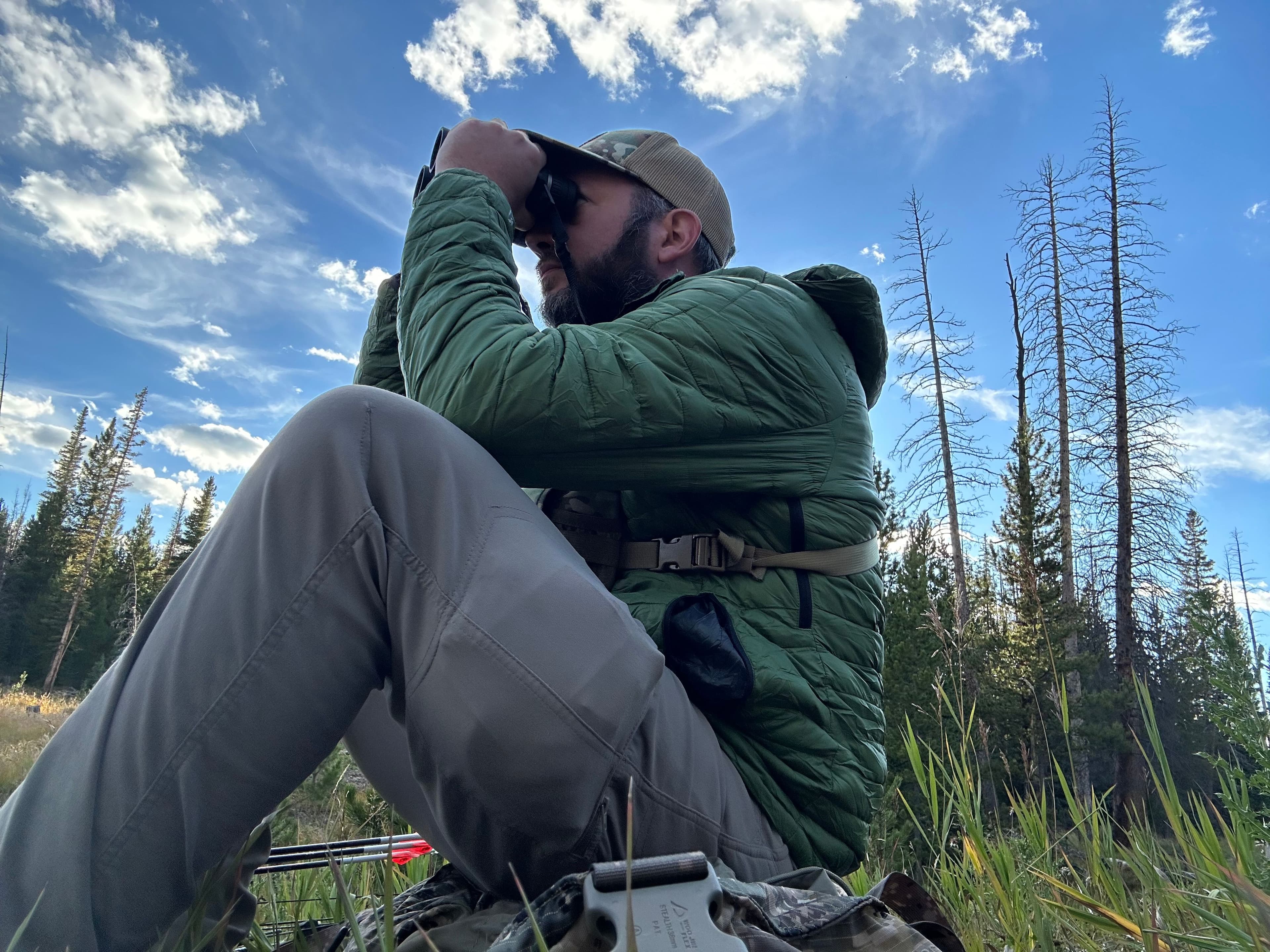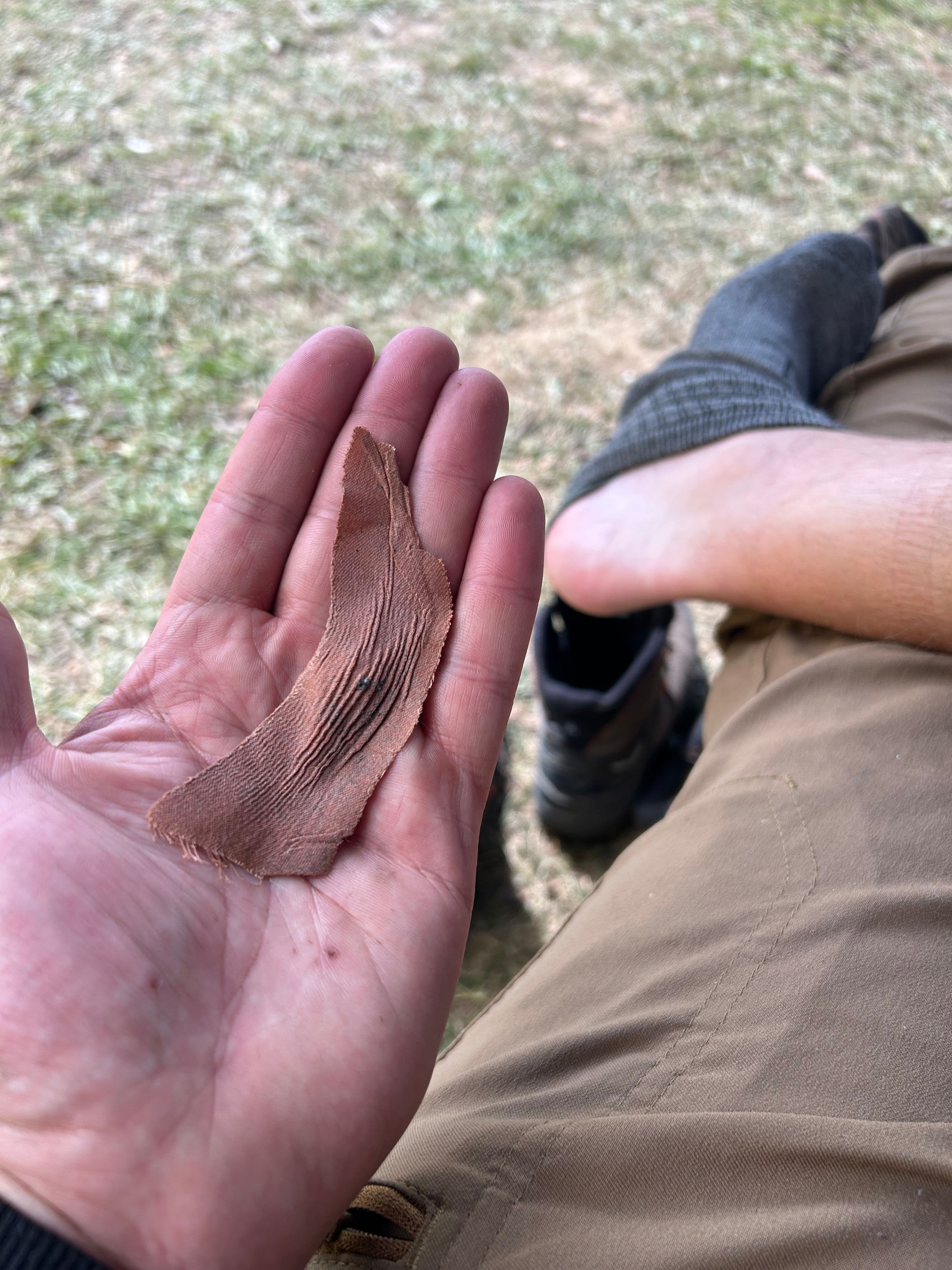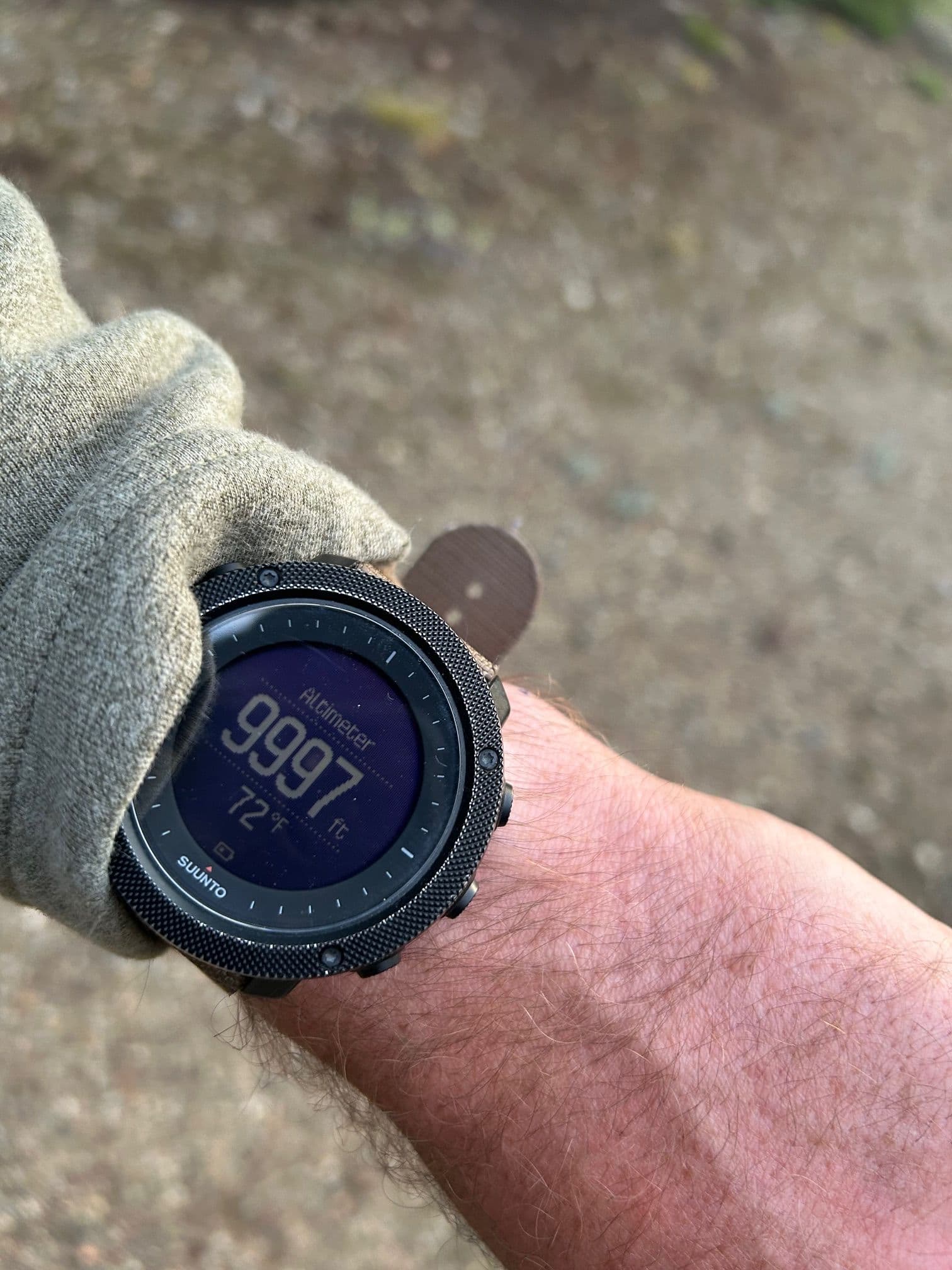Overlooked Elk Hunting Gear: Stuff You Need On The Mountain


Justin Hunold
03/28/2025
When you’re getting your elk hunting gear together, it's easy to get caught up in selecting the perfect rifle or bow, scouting optics, and hunting clothing. However, successful hunters know it's often the overlooked gear that makes the difference on the mountain. Here’s a detailed look at the critical but frequently forgotten elk hunting gear items you need for any elk-hunting adventure:
Water Filtration System
Staying hydrated is crucial, especially at high altitudes. Altitude sickness is no joke, and with the ability for that thin, dry air to dehydrate you and not drinking enough is a recipe for disaster. Choosing a water filtration system allows hunters to drink safely from streams or lakes without adding too much weight. These systems ensure you have a reliable source of clean water wherever your hunt takes you.
I like to start out the day with at least one standard 32-oz Bottle of water in my kit. Whether I am hunting day or overnight for weeks, when I start hunting, I have a full Nalgene-style bottle on my hip. I also normally carry a one-liter bladder of clean water in my pack. Hydration is key, and knowing that I have clean water for meals or coffee makes for one less thing to think about.
At some point, you will have to acquire water for elk hunting. For early season bowhunts, I like a Sawyer Squeeze; they are light, fast, and effective. The cons are simple, the bags suck, they don’t stay plyable and the actual filter can freeze and crack when not completely flushed and dry.
A pump-style filter like a Katadyn has long been a go-to in the backcountry and certainly has its place. They are great at cleaning a lot of water and can make even the grossest-looking water drinkable. The downside is that they are considerably heavier.
Steripens are fantastic, but they need to have power, and they don’t filter out floaties. This means that when used properly, they are great for killing anything that might make a hunter sick, but you’ll still have all of the sentiment in your water that you picked up when you scooped it.
In an emergency or if you really want to go with the absolute lightest option, water purification tablets are an option as well. They are light, and they work to kill all the little critters, but the taste keeps folks away, and you still won’t have a settlement-free drink.

Meals and Cook Kit
Calorie-dense, easy-to-prepare meals can boost morale and sustain energy levels on long hunts. Freeze-dried meals paired with a lightweight stove like the Jetboil or MSR PocketRocket can provide quick nutrition. I actually have both. My preference is a titanium pot with a Pocket Rocket because it is so packable. But some folks really love a sound self-enclosed jet boil system, which is what I tend to leave at camp with my bigger meals. Don’t forget utensils—a simple spork and collapsible bowl often suffice. I have a long-handled titanium spork that is the bee’s knees when it comes to backcountry eating.
I like Peak Refuel's dehydrated meals. Mountain House and Heather’s Choice are great options, too. Peak is okay for my stomach. I like the meals they offer, and they are calorie—and protein-dense. I generally eat a dehydrated meal for Dinner.
That leaves us with two other meals and snacks. For those on-the-go meals, you can go in a lot of ways in less expensive directions. You need to eat on the mountain. A lot of times, we break down physically on long hunts because we aren’t taking care of our bodies. A solid meal plan can add miles to your week just by staying well-fueled.
Normally, I am hiking before I eat breakfast, so a good bar, like a Mountain Ops Performance Bar, is a great choice. Don’t overlook a simple oatmeal packet or two. Granola, freeze-dried berries, or banana chips are also great. Some coffee or hot tea is also a great way to start the morning; there are a ton of simple instant options for these.
Lunch is another place where you can go with a freeze-dried meal; it’s just a lot of work when I’m on the go to bust out my stove to cook. I will often do some tuna in a bag, peanut butter packets, and another bar for lunch. I like the benchmark of 100 calories per ounce when I am hunting, while keeping nutrition in mind. This is an excellent place for a good old Snickers bar. I typically don’t eat a lot of candy bars, but on the mounta, a good Snickers is packed with quick-brungin sugars and slow-burning fats. It is an excellent on-the-mountain option for a midday pick-me-up. One thing I always take with me is Gummy Bears. I love them, and it's a good treat to keep the morale up.
I also like to put some sort of Hydration or Electrolyte mix in one of my water bottles for the day. It covers up a lot of weird tastes, water gets boring, and it helps keep you from cramping while camping.
Comprehensive First Aid Kit
Beyond basic bandages, your first aid kit should include blister treatment, antiseptic wipes, pain relievers, and a tourniquet. Specialized items like QuikClot gauze and medical tape are invaluable additions for handling serious injuries that may occur in remote areas.
I carry my leuko tape wrapped around my water bottle and trekking poles. Nothing beats a blister like that stuff. I will proactively wrap my heels to stop the inevitable hot spots I get. Leukotape beats moleskin and Band-Aids by leaps and bounds.

I also carry an Epipenn; I’m allergic to Oak, which can be challenging in the woods. However, an epipen can be a true lifesaver for someone with a Bee Sting or, god forbid, a cardiac situation. Epipens have been found to be a significant help in keeping folks alive during a cardiac incident, and when we are hours from rescue, that pen can save lives. (this is not medical advice; please follow your physician's recommendations, not some hunter writing a blog.)
Communication Devices
Reliable communication can be life-saving. Satellite messengers like Garmin InReach or ZOLEO allow you to stay connected when you are out of cell phone range, providing peace of mind to you and your loved ones.
I use a Garmin InReach Mini. This came in especially useful when I found out my mother was having emergency surgery via InReach Message while I was in the Colorado High Country and she was in North Carolina. It is also nice to be able to touch base with my family at home and get the rundown of their days and maybe the occasional plumbing issue I am missing while hunting.
Again, this sort of device is no longer an option. I wouldn’t hunt without one, period. They all come with a rescue me button, and if things go really south, you can press that button and call in the calvary to get you home safe.
Navigation Tools
GPS units and smartphone apps are great, but never overlook the reliability of traditional navigation tools. A durable map and compass require no batteries and function in any condition. Knowing how to use them effectively could save your hunt—or your life.
I carry no less than two two-ways to navigate with me on a mountain hunt, and I know how to use both. I always have maps for the area downloaded to my phone's mapping apps. This allows me to use them offline when I do not have service. I also have a Suunto watch that I program with waypoints for my vehicle and camp. Beyond that, I carry a laminated map and compass.

Learn basic map and compass land navigation and practice it when possible. Let’s face it: Most of us are using our phones and some sort of mapping app, but if the phone goes down, you still need to get home. The map and compass have worked for all of modern existence and will continue to do so even when you drop your phone in a pond.
Portable Power Sources
Power banks and portable solar chargers ensure your electronic devices remain functional throughout your hunt. Opt for lightweight and durable models that can withstand rugged outdoor use, like those from Goal Zero or Anker.
I carry all the necessary cords for all of my devices and a small solar charger. I run the devices to the battery packs to charge them, then set the power banks out and attach them to the solar charger to regain some of that juice while I’m glassing.
You can’t use your Mapping app, InReach, Camera, or Watch if you don’t have backup power for your phone and other battery-powered gear.
Survival Gear
An emergency survival kit containing fire starters, waterproof matches, a space blanket, and a signaling device like a whistle or reflective mirror should always be in your pack. A small shelter option, such as a tarp, can provide critical protection if stranded overnight.
I carry two lighters, wrapped with 100 mph tape, waterproof matches, and a ferrow rod. Fire is essential in an actual survival situation, but the ways to make it can also be affected by water and can be very fickle when you need them to work. Hence, the backup to the backup. I also have the mirror, whistle, cordage, and space blanket in a small stuff sack. I don’t go too overboard; I’m not building a settlement, just staying alive overnight.
Kill Kit and Game Cleaning Supplies
Many hunters underestimate the gear needed after a successful harvest. A quality kill kit should include game bags, a sharp knife or replaceable blade knife, nitrile gloves, paracord for hanging meat, and a lightweight tarp to keep your meat clean.
I would also like to keep all of this in one stuff sack. If I have paper tags, they go in this, too. I also keep laminated versions of my important hunting documents in there. They only come out if I am successful!
Duct Tape and Zip Ties
These two items might seem trivial but prove invaluable in unexpected scenarios, from quick gear repairs to securing loads. Strips of duct tape and a handful of zip ties take up minimal space and add significant versatility. In a pinch, they can fix a hole in your gear or a broken tent pole. They can also attach a Tag to the game, and Duct Tape burns really well.
These generally live in multiple places, some in my bino harness, tape wrapped around water bottles and trekking poles, and zip ties in any zipper pull on my gear. Think of where you can add things without adding bulk. These are great items that add zero weight but tons of functionality.
Personal Hygiene Essentials
Hygiene on extended hunts significantly impacts comfort and health. To maintain basic hygiene in the field, pack biodegradable wet wipes, a small toothbrush and toothpaste kit, and quick-dry towels.
Baby wipes can be dehydrated, packed, and then rehydrated in the field. I have taken to using these for cleaning different areas in the backcountry. Once you are a parent and have them around all the time, you realize how useful they are.
I also carry a small container of hand sanitizer. This can be used to clean my hands and tools like my spork or knife. In a pinch, it's good to have for cuts or abrasions. It will do the trick fas as an antiseptic. Remember when you couldn’t find this stuff five or six years ago? Well, iit'seasy to get now and works in a lot of ways.
I also carry Vaseline on cotton balls. Yes, it's an outstanding fire starter, but it also helps with chafing, dry skin, and chapped lips. All of these things are real considerations when Elk Hunting.
Final Thoughts
While gear like your rifle, optics, and clothing often gets the spotlight, overlooking these crucial items can turn your hunt into a challenging ordeal. Ensuring these items are part of your pack means you're ready to tackle any situation the elk woods throw your way, allowing you to focus entirely on the hunt itself.